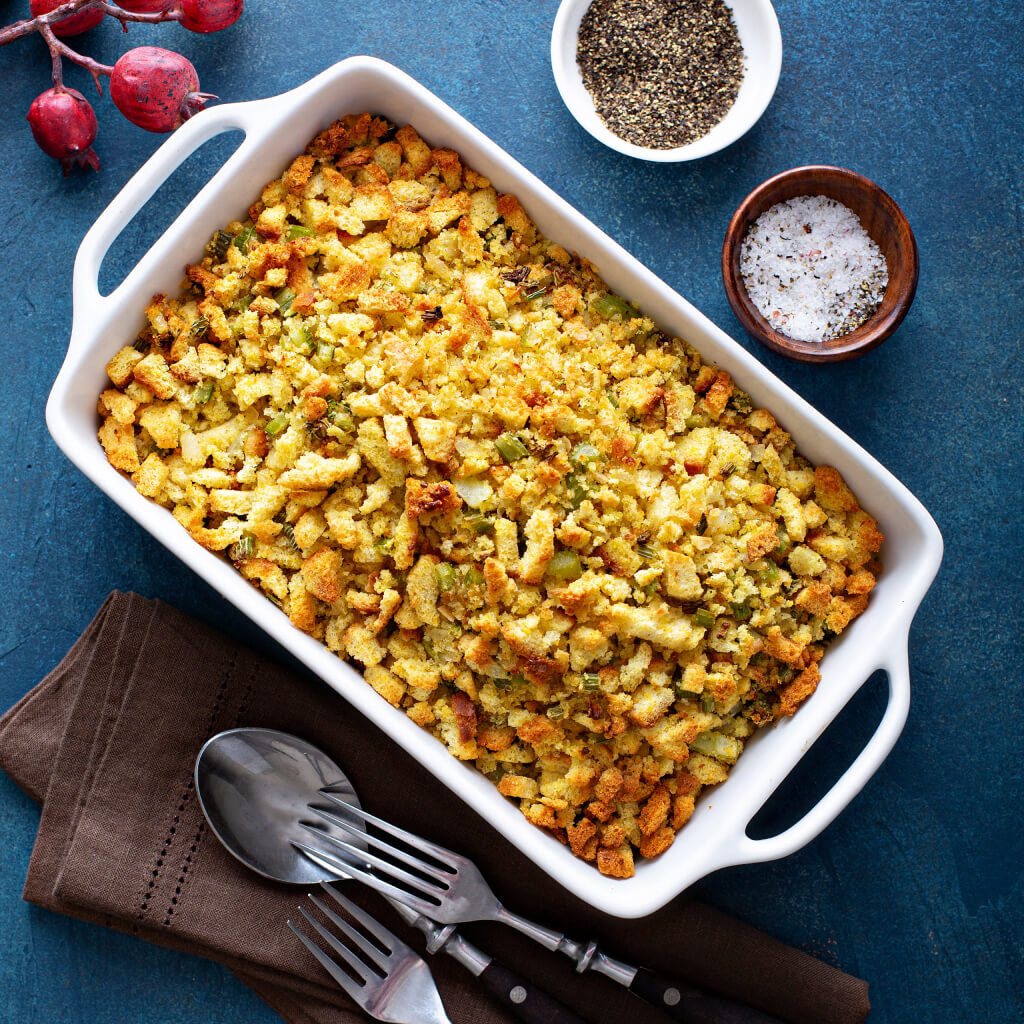
🙌 The people want stuffing!
🍞🧄🧅 Most traditional stuffing recipes use high FODMAP bread, onions and garlic so we worked hard to find this easy and delicious low FODMAP stuffing with all the traditional tastes. Enjoy! 😋
✍️ Ingredients:
- ½ cup butter, salted (120g)
- 10 slices low FODMAP bread torn into small pieces (650g)
- ½ cup olive oil (125g)
- 3 tsp garlic-infused olive oil (14g)
- Turkey mince (500 g)
- 1 cup spring onion, green tops only (50 g)
- 1 fennel bulb, finely diced (190g)
- 1 eggplant, finely diced(200g)
- 2 tsp low FODMAP chicken stock powder (8g)
- 1 tsp ground black pepper (2g)
- Dry white wine (100g)
- Parsley, finely chopped (30g)
- 2 Tbsp fresh sage, chopped (5g)
- 2 Tbsp thyme leaves, finely chopped (5g)
- 3 eggs, lightly beaten (175g)
- 1 cup water (you might need extra to moisten the stuffing prior to cooking) (250g)
👩🍳 Instructions:
- Spread bread pieces on a lined oven tray and dry overnight in a very low 50°C/122°F oven, then cool.
- Heat oils and butter in a large pan over medium-high and saute fennel and eggplant for about 10 minutes. Increase the heat to high and add the turkey and break up into rough chunks and lightly browned. Add wine, herbs, spring onion tops, stock powder and pepper and reduce for about 5 minutes while stirring. Remove from heat and cool for about 10 minutes.
- Combine all the ingredients and gradually add in water to thoroughly moisten bread pieces then rest for about 10 minutes (you might have to add more water).
- Preheat oven to 180°C/350°F and place stuffing in a lightly oiled baking dish that has a lip and cover tightly with baking paper then foil. Bake for about 35 to 40 minutes. Increase the oven temperature to 220°C/420°F, remove the foil and paper and bake for a further 10 minutes or until it is nicely browned.
- Note, this stuffing can be made up to 4 days ahead of time. The best way to reheat it s in the microwave. It can also be portioned and frozen.
🔎 Hints:
- 🍞 Gluten-free bread can also be used
- 🔪 You can add some chopped pecans or walnuts to replace the mince.
- 🥕Why not use other low FODMAP vegetables of your choice like capsicum, carrots, celeriac etc


